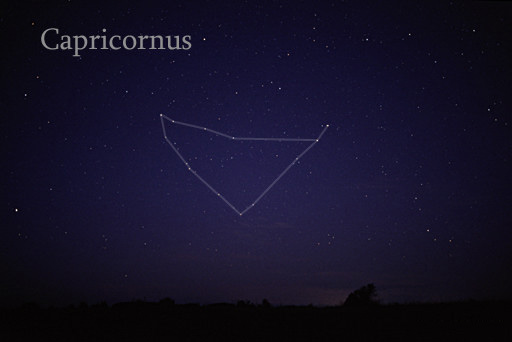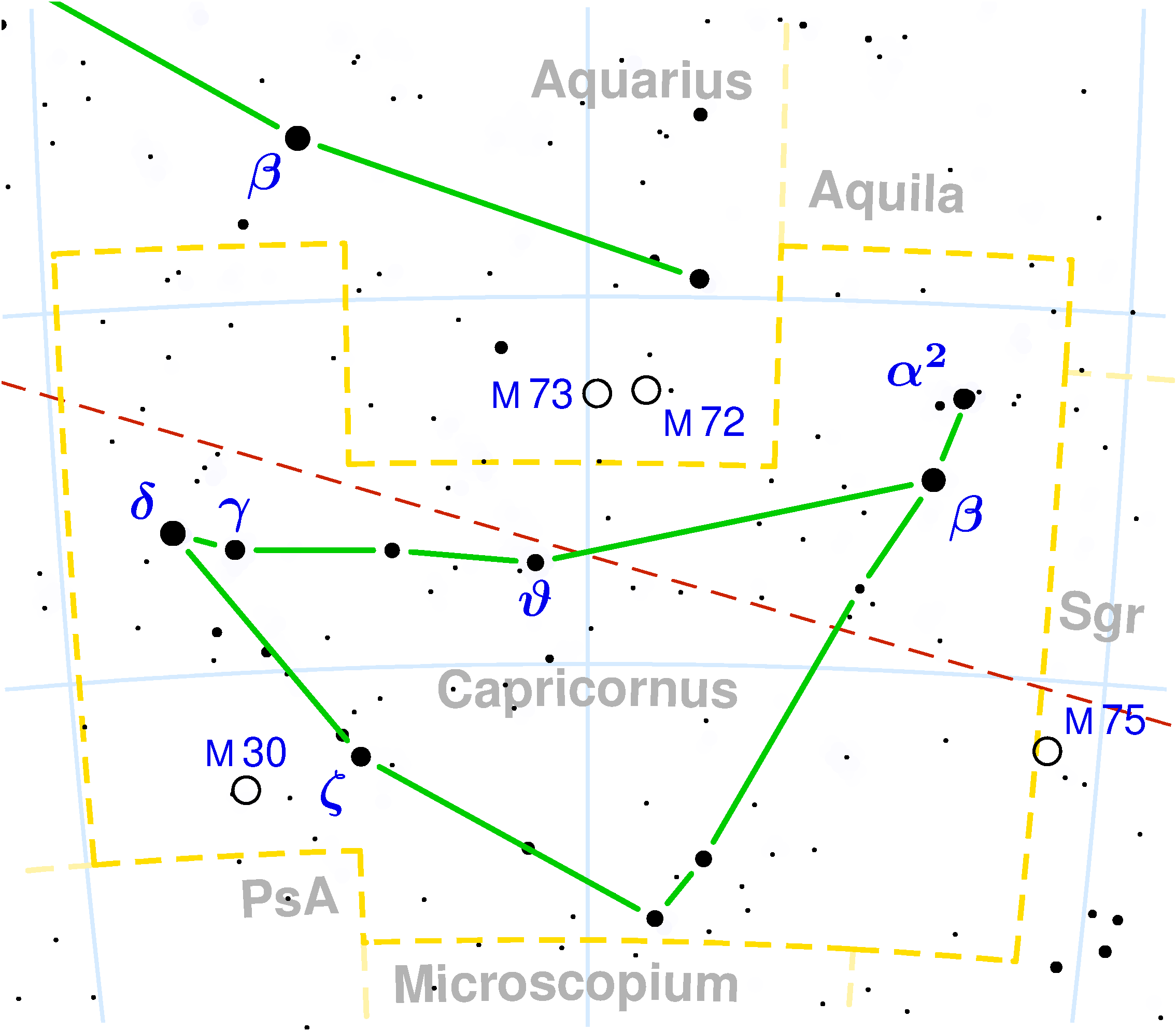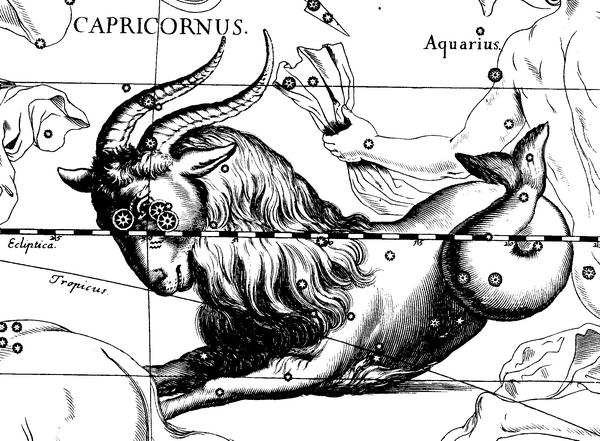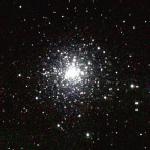CAPRICORNUS

Till Credner - Own work, AlltheSky, CC BY-SA 3.0, wikimedia

CC BY-SA 3.0, wikimedia
Capricornus is a rather dim constellation which needs to be viewed in dark skies far from city lights. Only with little light pollution can its triangular shape resembling the island of Sicily, be made out. It is made up of faint stars so it is difficult to see in skies affected by light pollution.

Johannes Hevelius - Atlas Coelestis.
Johannes Hevelius drew the constellation in Uranographia, his celestial catalogue in 1690,
Public domain, wikimedia
In Greek mythology, Capricornus identifies with the god Pan, with his horns and goat-like feet. He was put in the sky as thanks for helping Zeus defeat the monster Typhon.
Dahib is the second brightest star in the constellation. It is an orange giant star. It is 344 light-years from the Solar System. It is a multiple star system made up of 5 components.
Algedi is the Alpha star, well known for being a double star seen with the naked eye. Actually, the vision is optical (optical double star) and not physical, the brighter star is 686 light-years away while its companion star is 109 light-years from Earth.

Public domain, wikimedia
The only deep-sky object worth mentioning is the globular cluster M30, which is 27,000 light-years away, one of the most compact clusters of its kind. It has chains of stars that are resolvable in small amateur telescopes.
Southern Hemisphere: Capricornus can be seen at the same time of the year as in the Northern hemisphere. At the southern middle latitudes it can be seen around October right after sunset towards the south and right below the zenith.